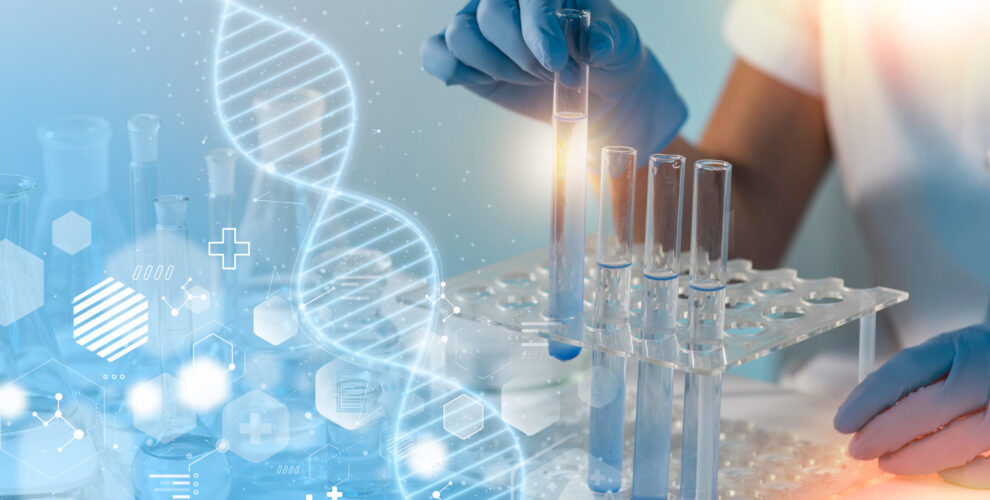Genome altering (likewise called quality altering) is a gathering of innovations that enable researchers to change an organic entity’s DNA. At specific locations in the genome, these technologies enable the addition, removal, or modification of genetic material.
Genome altering is of extraordinary interest in the anticipation and treatment of human illnesses. In order to comprehend diseases, genome editing is currently utilized in cell and animal models in research facilities. Scientists are still trying to figure out if this method is safe and works for people. It is being investigated in research and clinical preliminaries. If you’re a student who completed schooling, then it is a good start to pursue the best engineering colleges in Coimbatore genetic engineering courses or biotech making its influence the future generation. However, this article finds how it creates a revolution through medical innovations.
What is CRISPR precisely?
CRISPR is a microbial “immune system” that gives prokaryotes (bacteria and achaea) the ability to recognize precise genetic sequences. CRISPR (Clustered Regularly Interspaced Short Palindromic Repeats) is a technique that lets scientists change the genes in living cells. It holds immense applications, from relieving hereditary illnesses, distinguishing and treating tumors, treating HIV by obstructing replication in human cells, bioengineering new harvests and plants, taking out jungle fever, to altering DNA in live human undeveloped organisms.
- With the help of a Cas9 protein and a guide RNA, scientists can now use the CRISPR method to inactivate specific genes and create double-strand breaks anywhere in the genome.
- CRISPR has been utilized in high-throughput screening, as a diagnostic tool, to create relevant disease models, to identify pathogenic genes, and for CRISPR-based therapeutics for gene therapy.
- Researchers are reading up CRISPR for some circumstances, including elevated cholesterol, HIV, and Huntington’s illness. CRISPR has also been used to treat mice with muscular dystrophy. Sickle cell disease, for example, is most likely the first disease for which CRISPR aids in the cure.
- By using CRISPR gene editing technology, researchers were able to successfully disable a gene in human patients, reducing the amount of toxic protein in their blood by as much as 93% up to six months after the initial treatment.
The field of medicine was the first to reap the benefits of genetic engineering. Scientists can make a wide range of substances that can be used in medicine by using recombinant DNA technology, such as hormones, immune system proteins, and proteins that help blood clot and make blood cells.
- Human insulin was the first genetically engineered product that was approved for human consumption. The pioneering company in genetic engineering known as Genentech was responsible for inserting the human insulin gene into bacteria.
- Hereditary designing has likewise given a way to deliver more secure immunizations. The first thing that needs to be done is to locate the virus’s gene that triggers protective immunity. That gene is isolated and incorporated into a harmless virus-like vector molecule.
- Scientists use vector molecules to insert a functioning gene into the cells of people who have a disorder caused by a defective gene in gene therapy. In order to deliver the inserted genes to the diseased organs or tissues that are being targeted, vector molecules containing a functional gene are inserted into a culture of the patient’s own cells. In gene therapy, viruses are the vectors that are used the most.
Revolution in different sectors:
In business:
Recombinant microorganisms, which can be used in a wide range of industrial applications, are one area in which genetic engineering has been especially useful. The creation of modified bacteria that consume hydrocarbons is one of the most significant achievements. Oil slicks are destroyed by these microbes, and toxic waste-contaminated sites are cleaned up with them. Enzymes that are used in contact lens solutions and laundry detergents are produced by microbes that have been genetically modified.
Agriculture:
Through the application of recombinant DNA in agriculture, researchers have been able to develop crops with characteristics that were not present in nature and that increase crop yield or nutritional value. Such yields are named hereditarily altered creatures (GMOs). By controlling plant qualities, researchers have delivered tomatoes with longer time spans of usability and irritation safe potatoes. Hereditary designing has likewise been utilized to help the healthy benefit of certain food varieties. The white rice variety known as “golden rice” has had the gene for beta-carotene, a vitamin A. This supplement thick rice was produced for population in emerging nations where rice is a staple and where vitamin-A lack is broadly predominant.
The role that CRISPR and genetic engineering play in animal and plant conservation and even de-extinction is also the subject of discussion. You can find various innovations in this sector if you intend to get a degree in biotechnology from the best biomedical engineering colleges in Tamilnadu. Hope, this article is useful to gain better insights.


